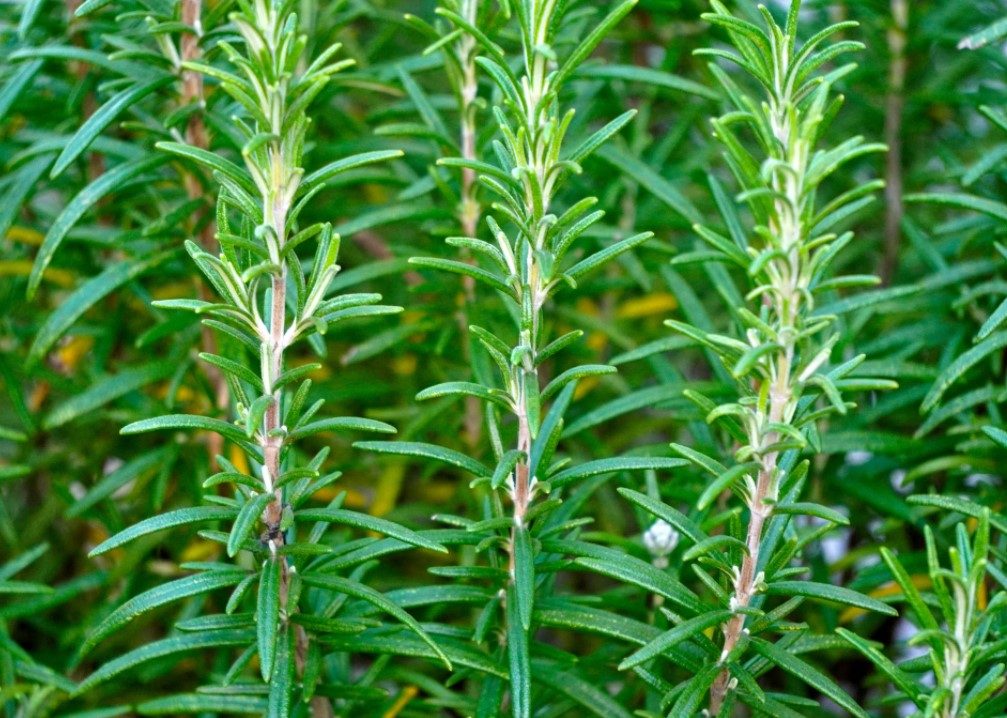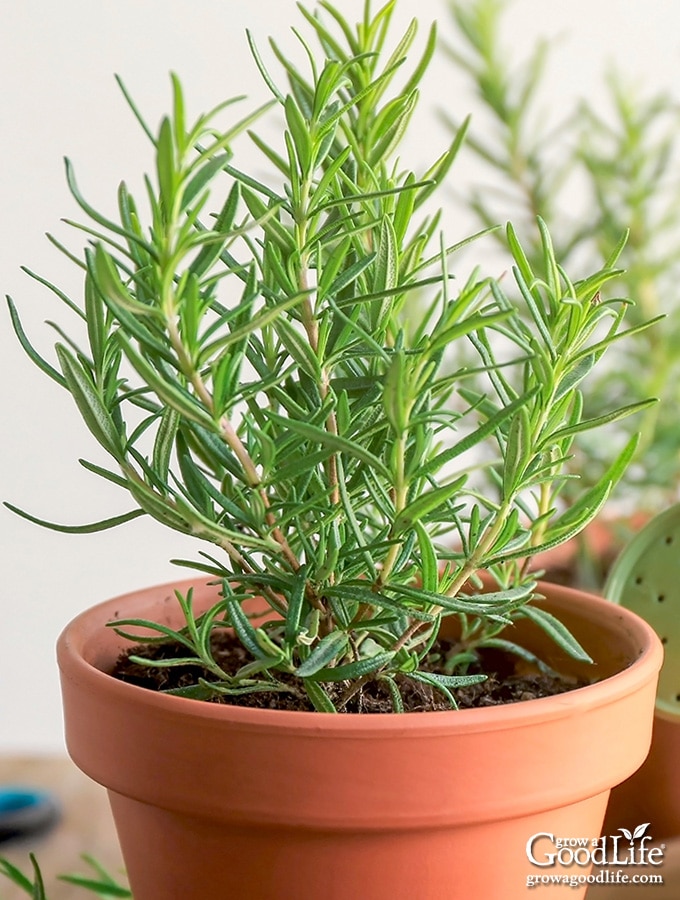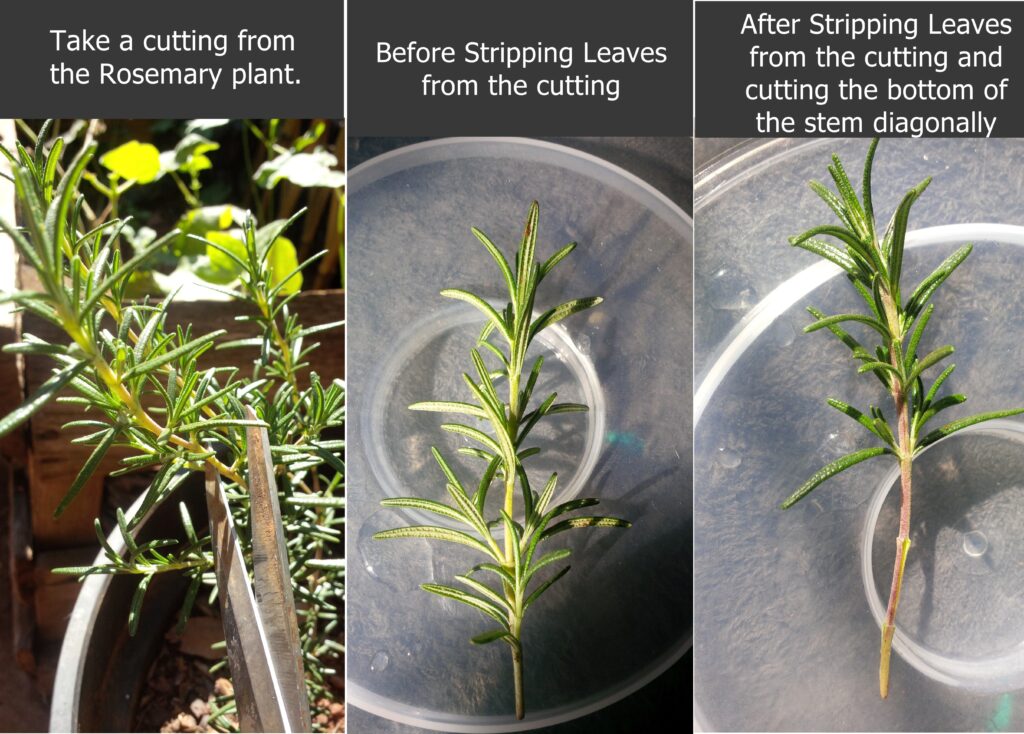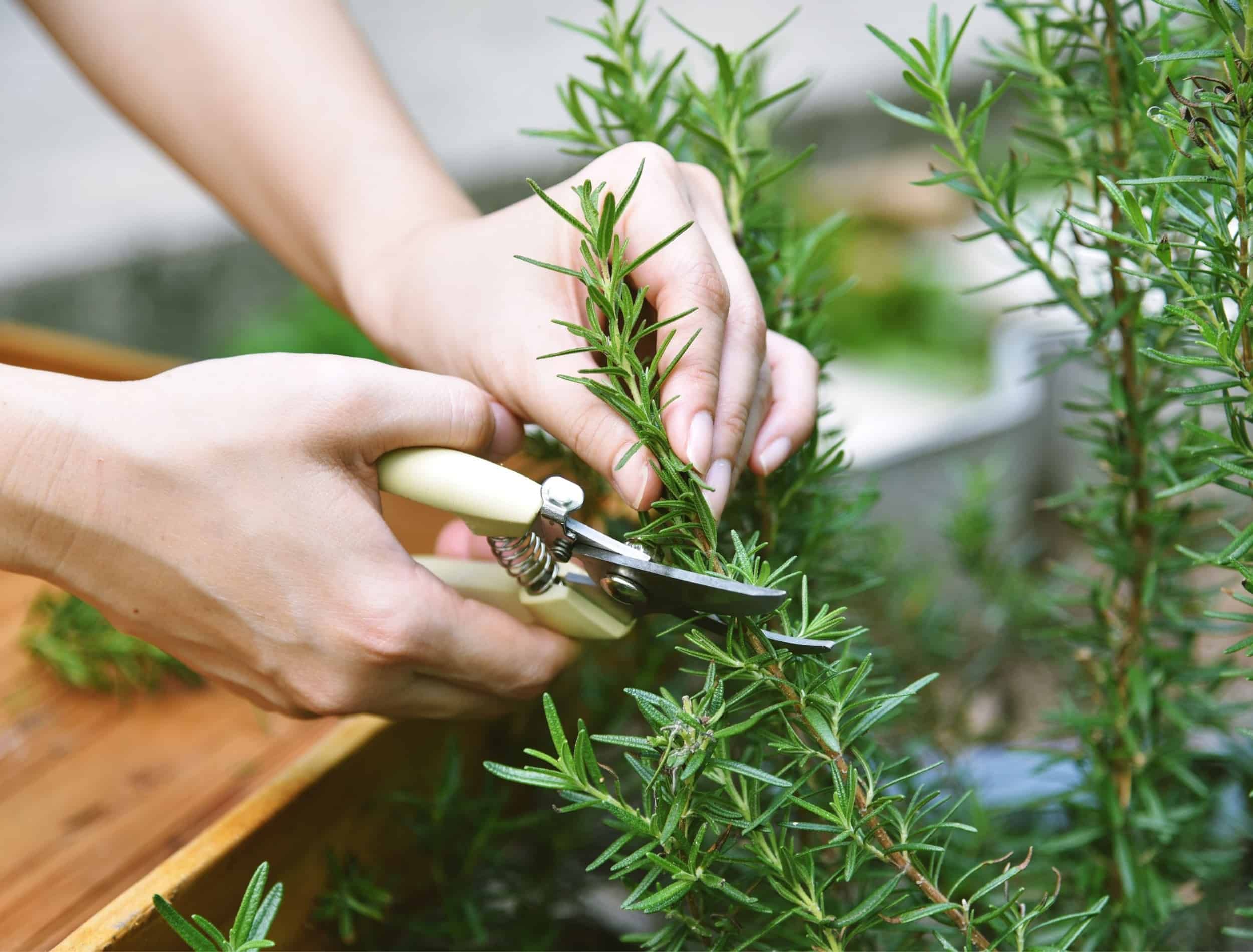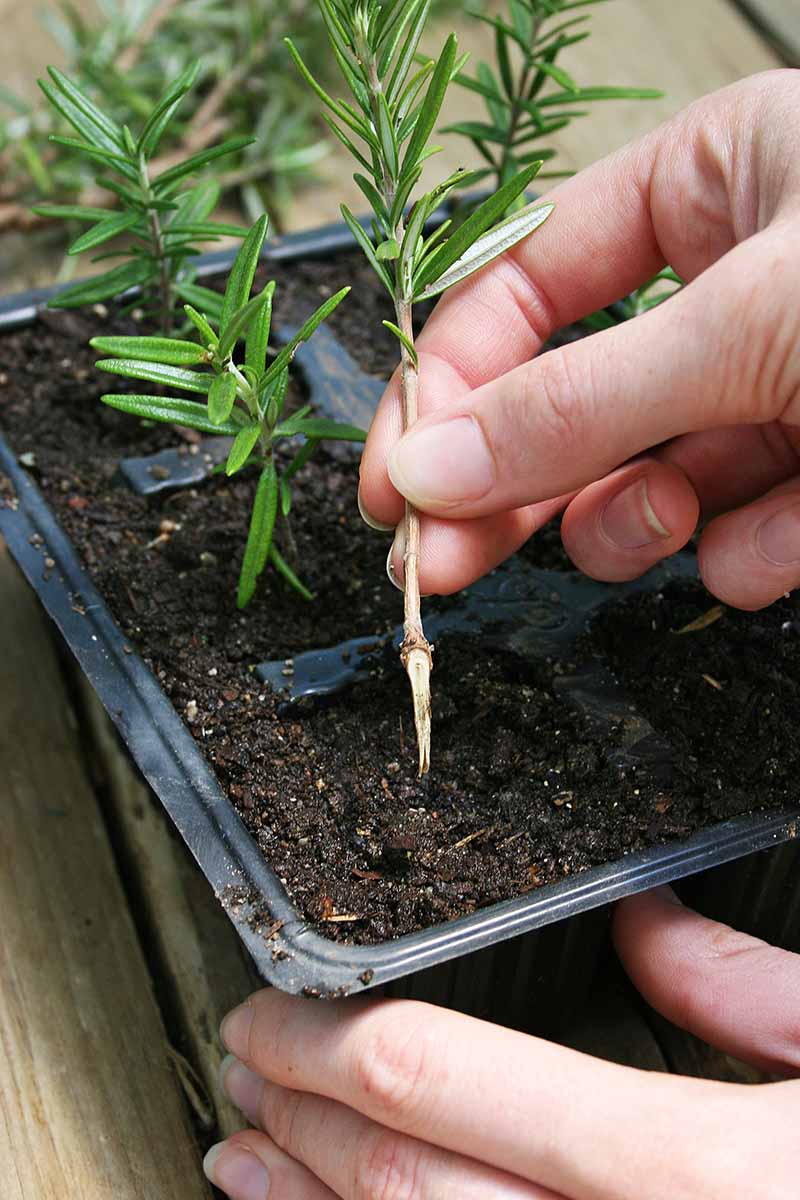Unlocking the Secrets of Rosemary Propagation
Rosemary is a popular herb known for its fragrant aroma and versatility in cooking. While it can be grown from seeds, propagating rosemary from cuttings is a more reliable and efficient method. But can you grow rosemary from a cutting? The answer is yes, and with the right techniques, you can successfully propagate this herb and enjoy its many benefits.
Propagating rosemary from cuttings offers several advantages over seed germination. For one, it allows for faster results, as cuttings can develop roots and grow into mature plants in a matter of weeks. Additionally, cuttings can produce plants that are genetically identical to the parent plant, ensuring consistent flavor and aroma. This method also reduces the risk of seed-borne diseases and pests.
To achieve optimal results, it’s essential to understand the process of propagating rosemary from cuttings. This involves selecting healthy cuttings, preparing them for planting, and providing the right conditions for root development. By following these steps, you can increase your chances of success and enjoy a bountiful harvest of fresh rosemary.
In this article, we’ll delve into the world of rosemary propagation and explore the best practices for growing this herb from cuttings. Whether you’re a seasoned gardener or a beginner, you’ll learn the techniques and tips necessary to successfully propagate rosemary and enjoy its many benefits.
Choosing the Right Rosemary Cutting
When it comes to propagating rosemary from cuttings, selecting the right cutting is crucial for success. But can you grow rosemary from a cutting if it’s not healthy? The answer is no, which is why it’s essential to choose a cutting that meets certain criteria.
A healthy rosemary cutting should be around 3-4 inches long, with a sturdy stem and a good balance of leaves and wood. The ideal cutting should have at least two nodes, which are the joints where the leaves meet the stem. The nodes are where the roots will develop, so it’s essential to have at least two to ensure successful propagation.
The leaf structure is also important, as rosemary cuttings with a high proportion of leaves to stem tend to root more easily. Look for cuttings with a good balance of leaves and wood, and avoid those with too much wood or too few leaves.
Another factor to consider is the color of the stem. A healthy rosemary cutting should have a green or slightly woody stem, while a cutting with a brown or dry stem may not root as well.
To increase your chances of success, it’s also essential to choose a cutting from a healthy, disease-free parent plant. Avoid taking cuttings from plants that are stressed, diseased, or pest-infested, as this can reduce the chances of successful propagation.
By selecting a healthy rosemary cutting with the right characteristics, you can set yourself up for success and increase your chances of growing a thriving rosemary plant from a cutting.
Preparing the Cutting for Planting
Once you have selected a healthy rosemary cutting, it’s essential to prepare it for planting. This step is crucial in determining the success of the propagation process. But can you grow rosemary from a cutting if it’s not properly prepared? The answer is no, which is why it’s vital to follow the correct preparation steps.
The first step in preparing the cutting is to remove the lower leaves, leaving only two or three sets of leaves at the top. This helps to prevent the cutting from drying out and reduces the risk of root rot. Use a sharp, sterile knife or pruning tool to remove the leaves, making sure to cut just above a node.
Next, trim the stem of the cutting to the desired length, making sure it’s long enough to plant in the soil but not so long that it becomes leggy. A good rule of thumb is to trim the stem to about 2-3 inches long.
After trimming the stem, apply a rooting hormone to the cut end. This helps to stimulate root growth and increases the chances of successful propagation. There are many different types of rooting hormones available, including powder, liquid, and gel forms. Follow the instructions on the product label for application instructions.
Finally, make sure the cutting is moist but not waterlogged. This will help to prevent the cutting from drying out and reduce the risk of root rot. You can dip the cut end of the stem in water or apply a small amount of moisture to the leaves to keep them hydrated.
By properly preparing the rosemary cutting, you can increase the chances of successful propagation and grow a healthy, thriving plant. Remember to handle the cutting gently and avoid damaging the stem or leaves, as this can reduce the chances of successful propagation.
Planting the Rosemary Cutting
Now that the rosemary cutting is prepared, it’s time to plant it. But can you grow rosemary from a cutting if it’s not planted correctly? The answer is no, which is why it’s essential to follow the correct planting steps.
The first step in planting the rosemary cutting is to choose the right soil. Rosemary prefers well-draining soil that is rich in organic matter. A mix of potting soil and perlite or sand is ideal, as it will help to prevent waterlogged soil and root rot.
Next, plant the rosemary cutting in the soil, making sure the node (where the leaf meets the stem) is buried in the soil. The ideal planting depth is about 1-2 inches, depending on the size of the cutting. Firm the soil gently around the cutting to secure it in place.
Water the soil gently but thoroughly after planting. Make sure the soil is moist but not waterlogged, as this can cause the cutting to rot. You can also apply a small amount of fertilizer to the soil to promote healthy growth.
Provide the rosemary cutting with bright, indirect light. Rosemary prefers full sun to partial shade, so a south-facing window or a spot under grow lights is ideal. Keep the temperature consistent between 65-75°F (18-24°C), as rosemary prefers cooler temperatures.
Finally, make sure the rosemary cutting has good air circulation. This will help to prevent fungal diseases and promote healthy growth. You can achieve good air circulation by keeping the cutting at least 6-8 inches away from any other plants or objects.
By following these planting steps, you can create a conducive environment for the rosemary cutting to develop roots and grow into a healthy, thriving plant.
Caring for the Newly Planted Rosemary Cutting
After planting the rosemary cutting, it’s essential to provide the right care to ensure successful propagation. But can you grow rosemary from a cutting if you don’t provide the right care? The answer is no, which is why it’s crucial to follow the right care routine.
Watering is one of the most critical care requirements for the newly planted rosemary cutting. Make sure the soil is consistently moist but not waterlogged, as this can cause root rot. Check the soil daily, and water only when the top inch of soil feels dry to the touch.
Fertilization is also essential for promoting healthy growth. Use a balanced, water-soluble fertilizer at half the recommended strength to avoid burning the roots. Apply the fertilizer once a week, and make sure to water the soil thoroughly after application.
Pruning is another crucial care requirement for the newly planted rosemary cutting. Prune the cutting regularly to encourage bushy growth and prevent it from becoming leggy. Remove any dead or damaged leaves or stems, and cut back the tips of the stems to encourage branching.
Monitor the cutting’s progress regularly, and make adjustments to the care routine as needed. Keep an eye out for signs of stress, such as yellowing leaves or droopy stems, and take action promptly to address any issues.
Patience is also essential when caring for the newly planted rosemary cutting. Propagation can take time, and it’s essential to allow the cutting to develop roots and grow at its own pace. Avoid over-handling the cutting, and let it grow undisturbed for several weeks.
By following these care requirements, you can provide the newly planted rosemary cutting with the best chance of success and promote healthy growth.
Common Challenges and Solutions
While propagating rosemary from cuttings can be a rewarding experience, it’s not without its challenges. But can you grow rosemary from a cutting if you encounter problems? The answer is yes, with the right solutions. Here are some common issues that may arise during the propagation process and how to overcome them.
Root rot is one of the most common problems that can occur when propagating rosemary from cuttings. This is often caused by overwatering, which can lead to the roots rotting away. To prevent root rot, make sure to water the cutting sparingly and only when the soil feels dry to the touch. If you do encounter root rot, remove the affected roots and treat the cutting with a fungicide.
Pests are another common problem that can occur when propagating rosemary from cuttings. Aphids, whiteflies, and spider mites are just a few of the pests that can infest rosemary cuttings. To prevent pest infestations, make sure to inspect the cutting regularly and treat any infestations promptly with insecticidal soap or neem oil.
Slow growth is another common issue that can occur when propagating rosemary from cuttings. This can be caused by a lack of light, inadequate watering, or poor soil quality. To promote healthy growth, make sure to provide the cutting with bright, indirect light and water it regularly. Also, use a high-quality potting soil that is rich in organic matter.
By being aware of these common challenges and having the right solutions, you can overcome any obstacles that may arise during the propagation process and successfully grow rosemary from cuttings.
Timing and Expectations
When propagating rosemary from cuttings, it’s essential to have realistic expectations about the timing of root development and plant maturity. But can you grow rosemary from a cutting quickly? The answer is yes, with the right conditions and care.
Roots typically begin to develop within 1-2 weeks after planting, and the new plant will start to produce new growth within 2-3 weeks. However, the rate of growth can vary depending on factors such as light, temperature, and watering.
It’s essential to be patient and not expect the new plant to mature too quickly. Rosemary plants typically take around 6-12 months to reach maturity, and they may require regular pruning to encourage bushy growth and prevent them from becoming leggy.
Factors that can influence the propagation timeline include the quality of the cutting, the type of soil used, and the amount of light and water the plant receives. By providing the right conditions and care, you can encourage healthy growth and development.
To manage expectations, it’s essential to monitor the plant’s progress regularly and make adjustments to the care routine as needed. Keep an eye out for signs of stress, such as yellowing leaves or droopy stems, and take action promptly to address any issues.
By understanding the timing and expectations of rosemary propagation, you can set yourself up for success and enjoy the many benefits of growing this fragrant and versatile herb.
Conclusion: Growing Rosemary from Cuttings Made Easy
Propagating rosemary from cuttings is a simple and effective way to grow this fragrant and versatile herb. By following the steps outlined in this article, you can successfully grow rosemary from cuttings and enjoy the many benefits of homegrown rosemary.
Remember, the key to successful propagation is to provide the right conditions and care for the cutting. This includes choosing a healthy cutting, preparing it properly, and providing adequate moisture and light.
With a little patience and practice, you can master the art of propagating rosemary from cuttings and enjoy a bountiful harvest of fresh rosemary. So why not give it a try? With the right techniques and a little care, you can grow rosemary from cuttings and enjoy the many benefits of this wonderful herb.
Can you grow rosemary from a cutting? The answer is yes, and with the right guidance, you can achieve success. So go ahead, give it a try, and discover the joy of growing your own rosemary from cuttings.


